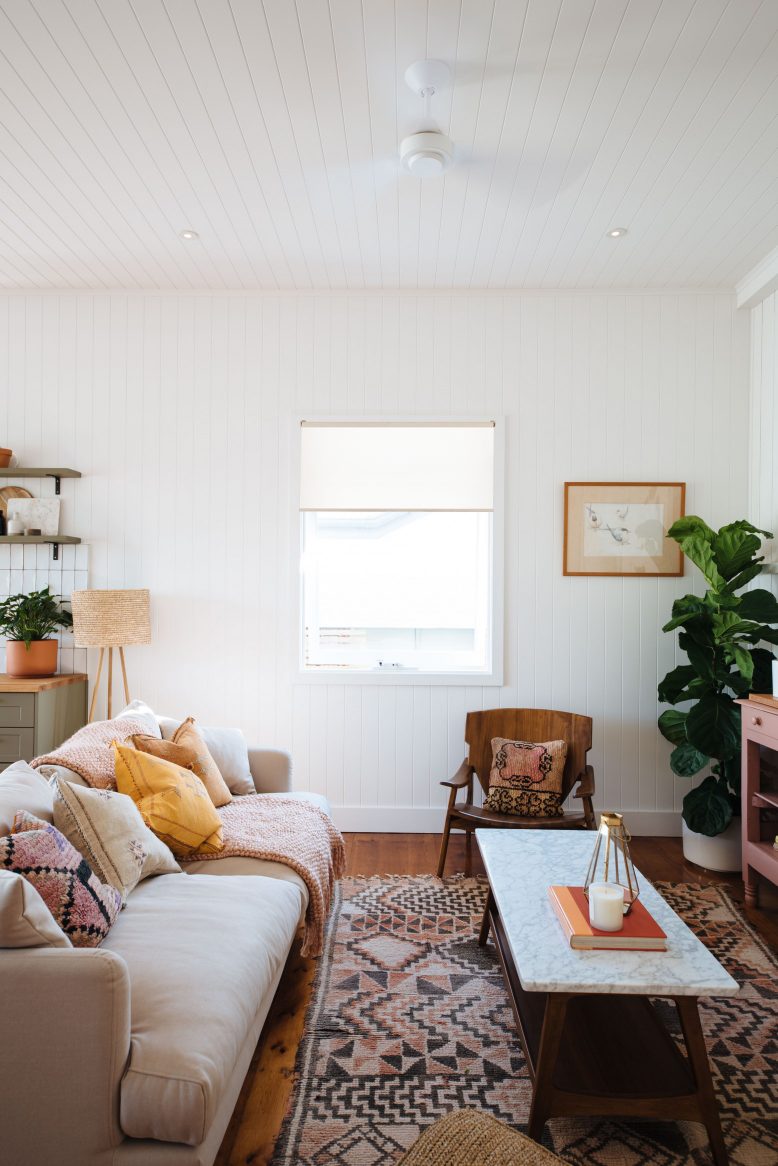There’s nothing better than decorating a space, it really is one of the best parts of any big (or small) renovation.
But when dealing with the decor for a whole house, how do you put together all the different elements in a cohesive way, without it feeling completely all over the place? I mean, it’s easy to use so many different decor styles – rugs, lamps, artwork, furniture – that it lacks cohesion and feels like a complete mess. On the other hand, the last thing you want is a space so perfectly matched that it lacks character or fails to show what you actually like. It can be tricky!
When planning the decor at our renovation, I spent a lot of time working through how to create a decor plan, which was both interesting, unique but also cohesive (I think!), and I wanted to share how I got to it in the end. Read on for more.
Being a visual person, I love to put together these graphics for you. Feel free to save it or pin it to your renovation board!
How to Create A Cohesive (But Interesting!) Decor Plan for Your Whole House
Create a Moodboard For Your Space
It really pays to create a moodboard when you do anything creative, and decorating a space is no exception. I always start with a moodboard of textures, colours, rooms, design styles and furniture that I like. From this I like to hone in on the style I like, keeping or rejecting images or items depending on how they go together. If you can, don’t skip this process, as it’s a really useful way to visualise what you want, and it also helps you avoid that mess of design styles that can happen when you get over excited and try to jam everything you love into one space.
Develop A Colour Palette
Choosing colours carefully is one of the easiest ways to ensure cohesion in a space. You’ll remember how much time I spent thinking about the colour palette for our renovation! If you’re dealing with choosing the paint palette, it’s worth thinking about the colours you will be using in terms of the whole house, rather than choosing a plan room by room. I mean, you can definitely play around with paint tweaks in different rooms, but it’s worth choosing a set of colours that make up your overall palette. In addition to paints, the colour palette extends to all other elements in your home, including textiles and small decor items like pots as well as books and lamps. It’s worth really understanding your colour choices as I think this has a huge impact on the decor of a space.
Mix and Match Your Furniture
You’ll know by now that I’m all about mixing and matching when it comes to furniture. For me, it actually pays to mix up your furniture styles rather than stick with one style, which can feel a bit forced or like a showroom. But I know the concept of ‘mixing and matching’ can be a bit daunting if you’re not sure what will go together. Experimenting here is useful, but what can help is to select a few different styles, for example – mid century, industrial and cane – rather than simply adding as many different types as you can. Choosing a few styles that work together and using them throughout the house is a great way to add interest but still have a cohesive look.
Decide on a loose theme for your Textiles
For me, textiles like rugs, sofa fabrics and cushions absolutely make a space and I think they add so much personality and allow you to get creative without doing anything too permanent. But here too it’s useful to consider a bit of a theme throughout the different rooms in your house. Neutral textiles work in most spaces, but if you’re looking to integrate colour or patterns you might consider choosing similar styles or complementary colours and patterns. Finding commonality in your textiles, whether it be the tones, patterns or textures, goes a long way to adding cohesion to a space without it being boring. For our renovation, I chose simple furniture but used patterned and bright rugs and cushions from Morocco to make it feel like home.
Experiment with Artwork & Decor Objects
One place you can truly get experimental is with artwork and decor objects like candles, baskets, pots, books. As I mentioned above, the colours of these things will tie the whole space together (or not), so it’s with being selective in how your art or smaller decor supports the overall colour palette in your space. That said, you can also try out new things using art and decor, and mix it up in each room so that there’s an element of the unexpected.
Use plants to tie the space together
Finally, what’s a room without a few great plants? I’m kind of embarrassed to admit that when I’m planning the decor for a home I even think about the tones of green that different plants have. I tend to think that different plants go well with different decor styles – deeper greens give a more tropical feel whilst light green leaves feel more minimalist. I think I could write a whole post (or perhaps a whole book!) on this alone. Obviously to say more is more when it comes to plants, but it pays to think about what you choose.




















